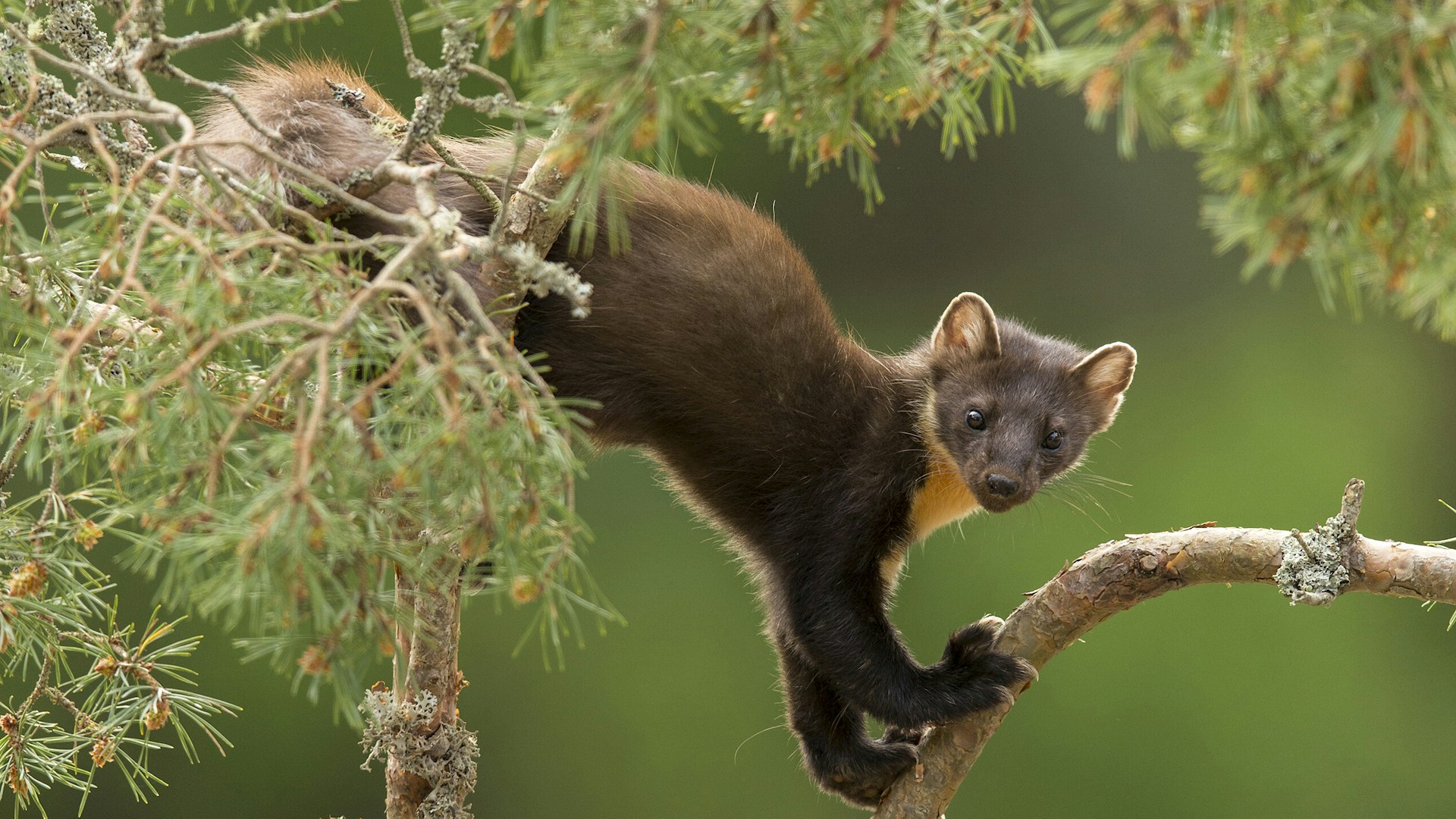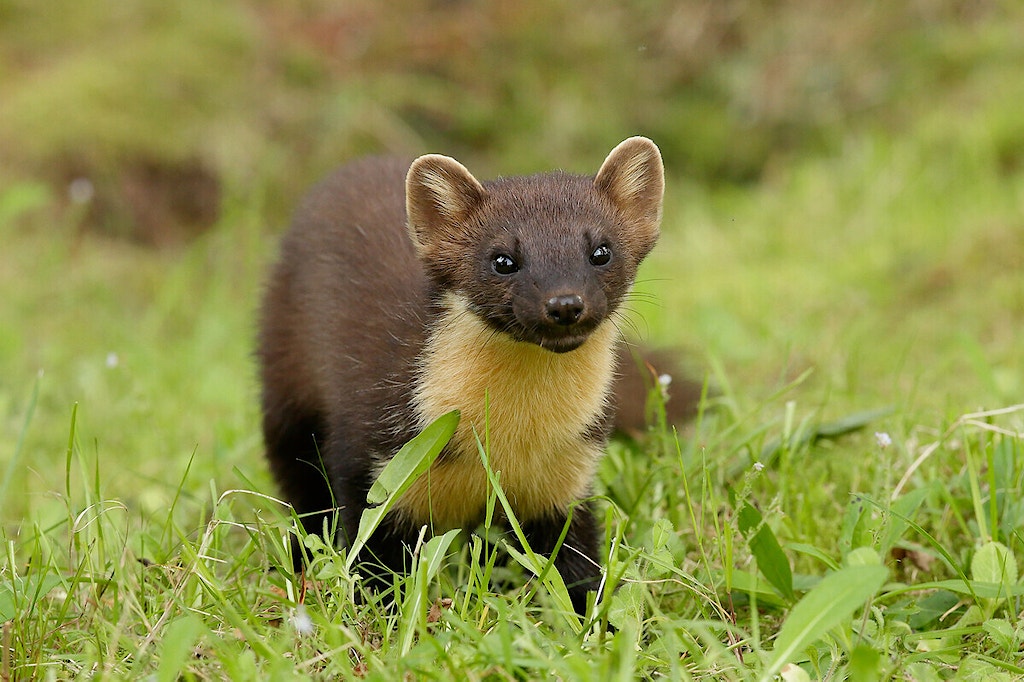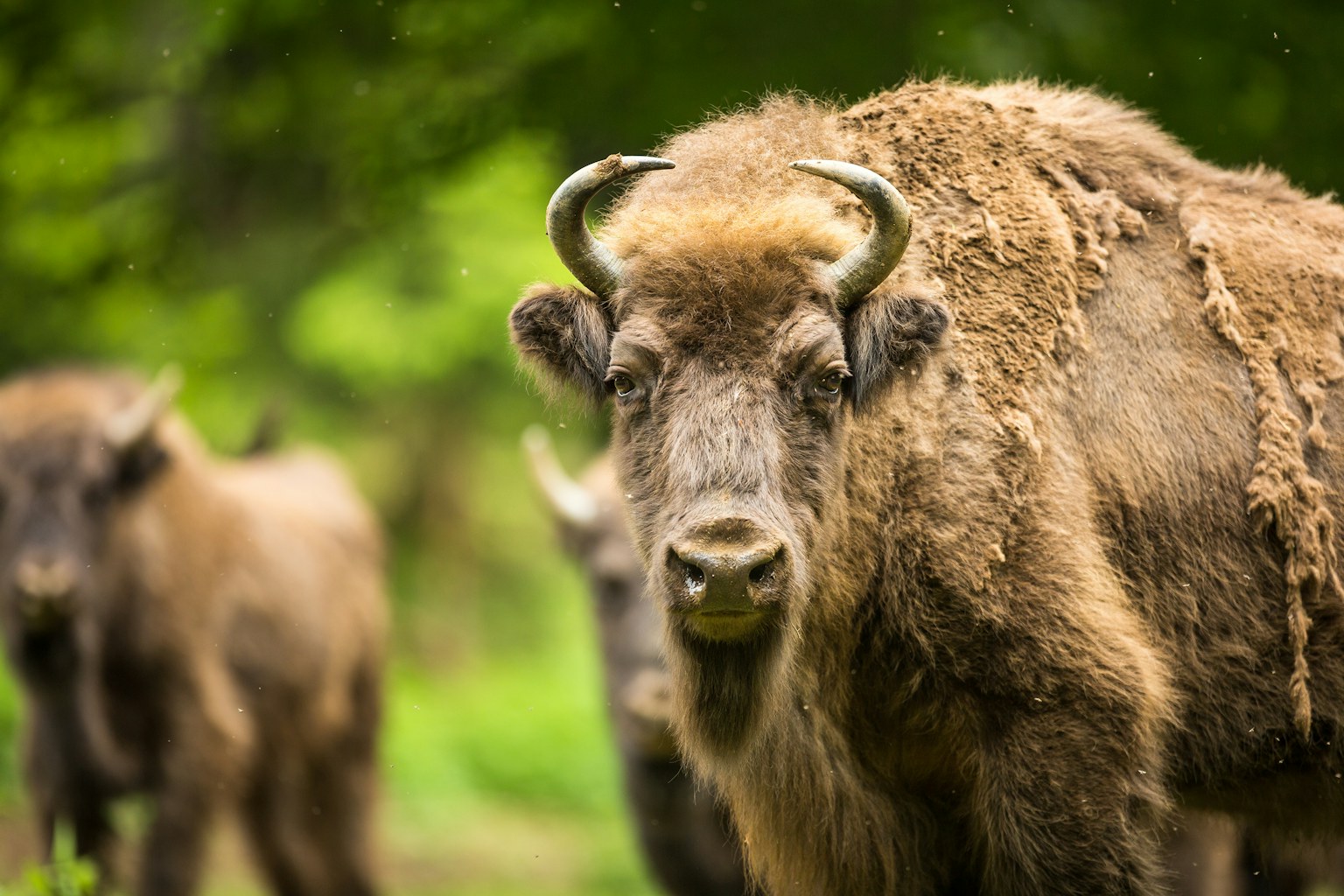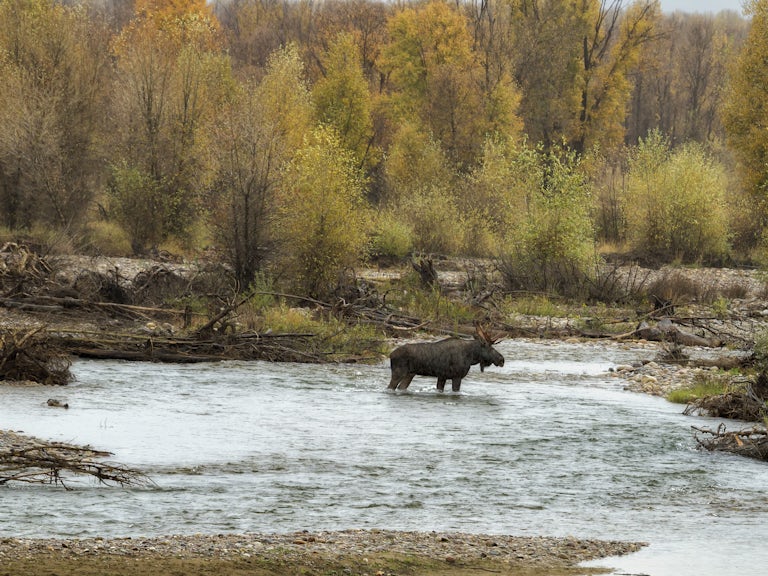Pine marten
Martes martes
One of several species of mustelid that are native to the UK, this is an agile predator that lives in trees.

How it shapes the landscape
Pine martens prey on small mammals, carrion and insects, as well as eating birds’ eggs, berries and honey.
There is growing evidence that pine marten predation has a positive impact on red squirrel populations, through targeting non-native grey squirrels. Grey squirrels are slower, more numerous, larger, spend more time on the ground and haven’t evolved to evade them.
This could potentially help defuse the resource competition between grey and red squirrels and help save our native red squirrels. They may also help reduce the significant damage to trees caused by greys.
Where it likes to be
Pine martens are endangered woodland mammals, preferring our native woods but tolerating conifer plantations. Their deep woody-coloured fur and cream bib reflect its favoured hangout, camouflaging it against the bark as it hunts its prey through the trees.
How much space they need
One pine marten ideally needs at least 100 hectares of native woodland within its territory. Rewilding at scale is a must if we are to support a viable population around Britain once again.

Background story
Once prevalent throughout Britain, by the late 19th century only a few populations of pine martens in the north and west of Scotland had survived, due to the destruction of our vast wild woodlands and coming into conflict with humans.
In 1988 legal protection was introduced to prevent hunting and persecution by gamekeepers and others, and a licence is now required to carry out work relating to pine martens. The legal protection has enabled the spread of pine martens into southern Scotland and over the border into northern counties of England. There have been several confirmed sightings in places outside of areas where known introductions have taken place.
Can we have them in Britain?
Yes, there are thought to be around 4000 pine martens in Britain now. The vast majority are in Scotland, where the population continued to survive in pockets. But in recent years, a number of successful pine marten reintroductions have taken place across Britain.
- Between 2015 and 2017, some 51 pine martens were translocated from Scotland to Wales, where there is now a viable population
- In 2019, Forestry England released 19 individuals in the Forest of Dean
- In 2024, 15 pine martens from populations in Scotland were successfully reintroduced to Dartmoor as part of The Two Moors Pine Marten Project, led by the Devon Wildlife Trust
- Another reintroduction took place in 2024 with 13 individuals released in the Lake District, thanks to the University of Cumbria’s South Cumbria Pine Marten Recovery Project
- Another pine marten release is planned for Exmoor in 2025, alongside an additional release in Cumbria
In summary
- Hunted to extinction in much of England and Wales
- A member of the weasel family, Mustelidae
- Pine martens are a nocturnal species and are very hard to spot
- Baby pine martens are called kits
- Adapted for life in the trees, but they can be quick across ground too


Recovery through reintroductions
Why bringing back native species is a key part of re-establishing natural processes and restoring ecosystems.


